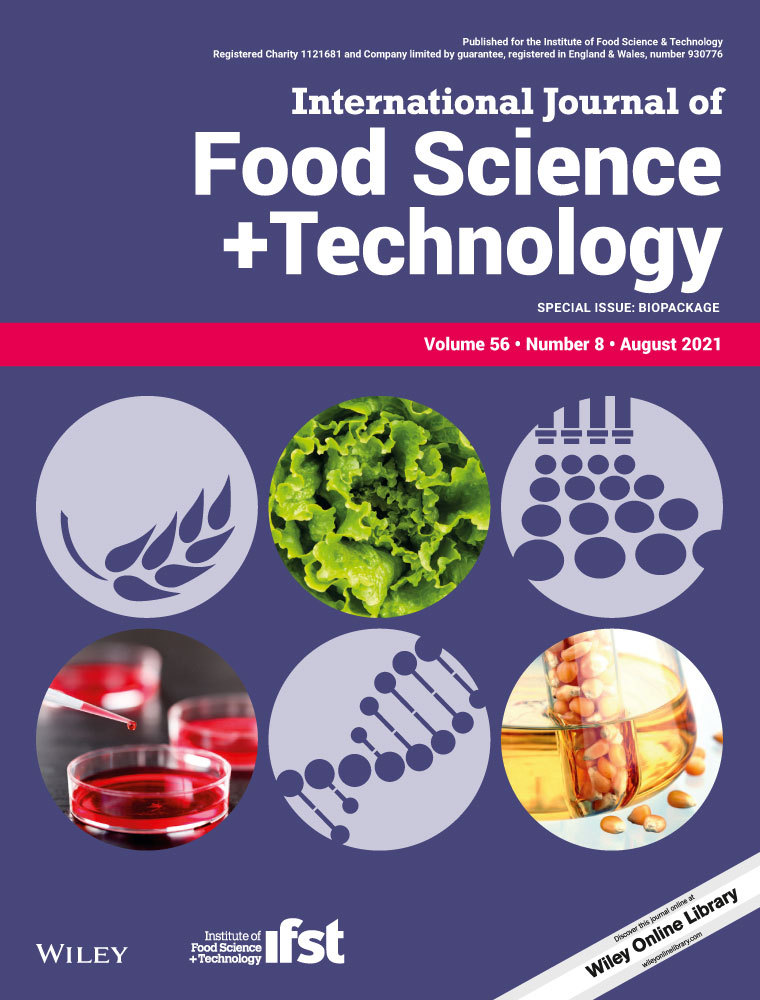Ver ítem
- xmlui.general.dspace_homeCentros e Institutos de InvestigaciónCIA. Centro de Investigaciones de AgroindustriaInstituto de Tecnología de AlimentosArtículos científicosxmlui.ArtifactBrowser.ItemViewer.trail
- Inicio
- Centros e Institutos de Investigación
- CIA. Centro de Investigaciones de Agroindustria
- Instituto de Tecnología de Alimentos
- Artículos científicos
- Ver ítem
Review Characterization of edible films formulated with sodium alginate and low methoxyl pectin in osmotic dehydration applications
Resumen
The aim of this work was to evaluate the behavior of two edible films (sodium alginate and low methoxyl pectin) under different osmotic conditions (solutions: sucrose, glucose syrup, and maltodextrin; concentrations: 40 °Brix and 60 °Brix; temperature 40 °C; and processing times: 0.5, 1 and 2 h). From the experimental water loss and solid uptake kinetics, effective diffusion coefficients and the dehydration performance ratio were obtained. The
[ver mas...]
The aim of this work was to evaluate the behavior of two edible films (sodium alginate and low methoxyl pectin) under different osmotic conditions (solutions: sucrose, glucose syrup, and maltodextrin; concentrations: 40 °Brix and 60 °Brix; temperature 40 °C; and processing times: 0.5, 1 and 2 h). From the experimental water loss and solid uptake kinetics, effective diffusion coefficients and the dehydration performance ratio were obtained. The microstructural characteristics of the osmodehydrated films were also analyzed using pear as a food matrix. The results showed that films osmodehydrated with maltodextrin and glucose syrup solutions presented higher the dehydration performance ratio values than those osmodehydrated with sucrose. A reduction of the thicknesses of edible coatings was observed. The best formulation was sodium alginate 2 % and calcium lactate 5 % according to microstructural analysis and structural integrity for at least up 16 h of osmotic dehydration.
[Cerrar]

Autor
Soteras, Edgar Mario;
Rodriguez, Anabel;
Gamboa Santos, Juliana;
Campañone, Laura Analía;
Fuente
International Journal of Food Science & Technology (First published August 2021).
Fecha
2021-08-21
Editorial
Wiley
ISSN
1365-2621.
0950-5423
0950-5423
Formato
pdf
Tipo de documento
artículo
Palabras Claves
Derechos de acceso
Restringido
 Excepto donde se diga explicitamente, este item se publica bajo la siguiente descripción: Creative Commons Attribution-NonCommercial-ShareAlike 2.5 Unported (CC BY-NC-SA 2.5)
Excepto donde se diga explicitamente, este item se publica bajo la siguiente descripción: Creative Commons Attribution-NonCommercial-ShareAlike 2.5 Unported (CC BY-NC-SA 2.5)

